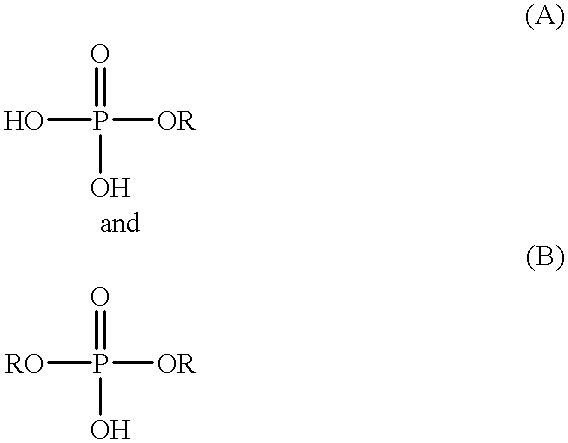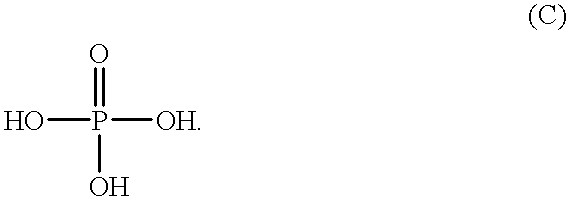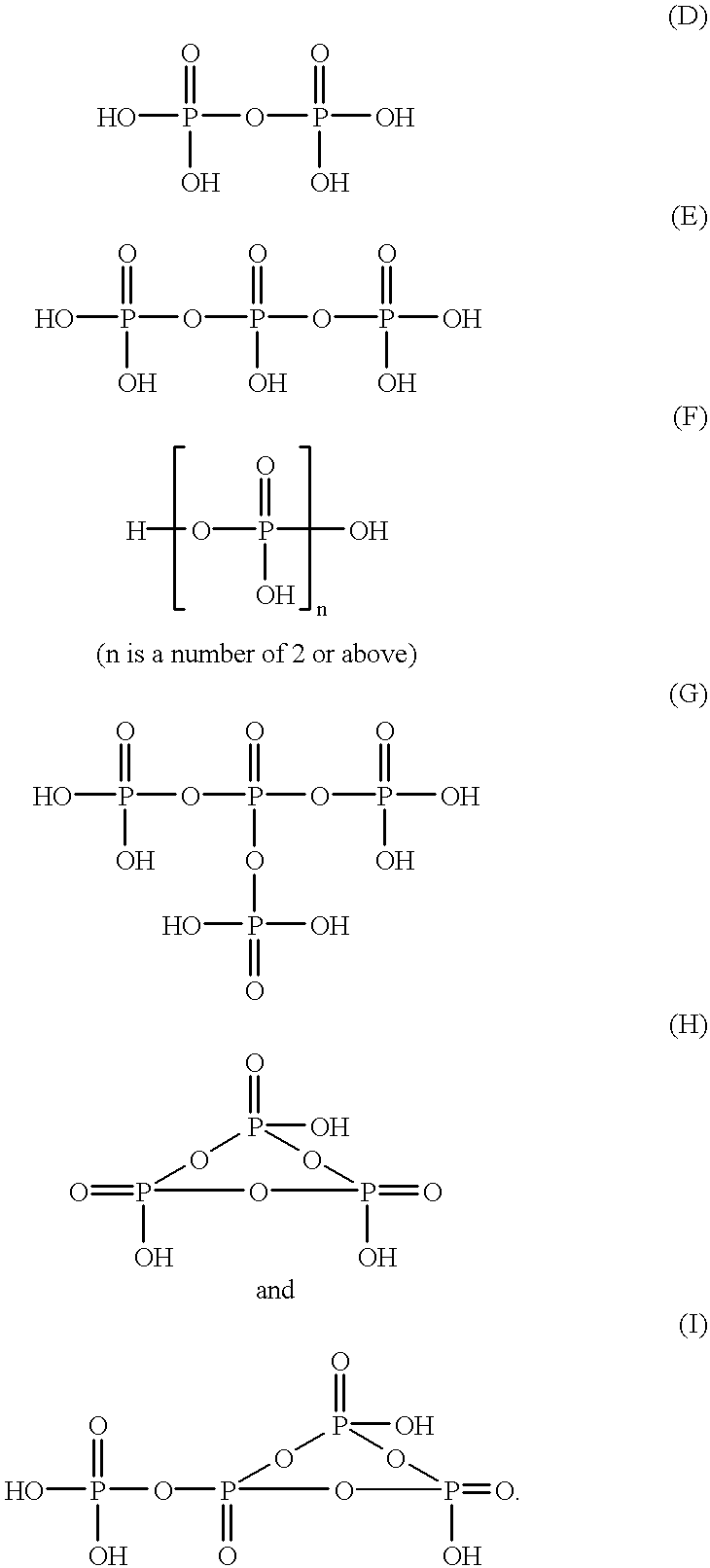Process for the preparation of phosphoric monoester
a technology of phosphoric monoester and phosphoric diester salt, which is applied in the field of process for the preparation of phosphoric monoester, can solve the problems of process (1), unsatisfactory industrial processes, and inability to use the phosphoric diester salt of the selenite salt,
- Summary
- Abstract
- Description
- Claims
- Application Information
AI Technical Summary
Benefits of technology
Problems solved by technology
Method used
Image
Examples
first embodiment
According to the present invention, the phosphorylating agent prepared above is reacted with an organic hydroxyl compound under such a condition that the value represented by the above formula (II) ranges from 2.8 to 3.2, which means that phosphorylating agent (calculated as P.sub.2 O.sub.5 unit(s)) is initially fed in an amount of at least about 0.91 mol per 2 equivalents of hydroxyl groups derived from the organic hydroxyl compound (i.e., in an amount of at least about 91% of the required theoretical amount). When the value represented by the above formula (II) is less than 2.8, which means the presence of an excess of phosphorylating agent, excess phosphorylating agent will be finally converted into orthophosphoric acid, so that the resulting reaction product will contain an increased amount of orthophosphoric acid unfavorably. Further, when the reaction is conducted under such a condition that the ratio as defined by the above formula (II) is less than 2.8, sesquiphosphate is fo...
second embodiment
According to the sent invention, the phosphorylating agent is reacted with an organic hydroxyl compound in a first step under such a condition that the ratio as defined by the above formula (II) ranges from higher than 3.2 to 6.4, which means that phosphorylating agent (calculated as P.sub.2 O.sub.5 unit(s)) is initially fed in an amount of at least 0.37 mol per 2 equivalents of hydroxyl groups derived from the organic hydroxyl compound (i.e., in an amount of at least 37% of the required theoretical amount). When the first step of the reaction is conducted under such a condition that the ratio as defined by the above formula (II) exceeds 6.4, a large amount of unreacted alcohol remains in the reaction system. In this case, the reaction can be advanced by adding phosphorus pentaoxide to the resulting reaction system after the completion of the reaction of the first step. However, a large amount of phosphorus pentaoxide must be added to the reaction system to advance the reaction, whi...
example 1
75% phosphoric acid, 19.7 g [P.sub.2 O.sub.5 : 10.7 g (0.075 mol), water: 9.0 g (0.5 mol)], and phosphorus pentaoxide (active ingredient: 98.5%), 37.2 g (0.258 mol), were fed into a reactor (capacity: 1000 ml). The obtained mixture was stirred at 50.degree. C. for 0.5 hour to prepare a heterogeneous phosphorylating agent (the ratio as defined by formula (I): 0.67).
Then, 186.3 g (1.00 mol) of lauryl alcohol (MW: 186.3) was added to the heterogeneous phosphorylating agent at 50.degree. C. and the obtained mixture (the ratio as defined by formula (II): 4.5) was kept at 80.degree. C. for one hour to conduct a reaction. 24.0 g (0.167 mol) of phosphorus pentaoxide (active ingredient: 98.5%) was gradually added to the obtained reaction mixture at 80.degree. C. in 2 hours. After the completion of the addition, the resulting mixture (the ratio as defined by formula (II): 3) was kept at 90.degree. C. for 6 hours to further conduct a reaction. During the above operation, the reaction system wa...
PUM
 Login to View More
Login to View More Abstract
Description
Claims
Application Information
 Login to View More
Login to View More - R&D
- Intellectual Property
- Life Sciences
- Materials
- Tech Scout
- Unparalleled Data Quality
- Higher Quality Content
- 60% Fewer Hallucinations
Browse by: Latest US Patents, China's latest patents, Technical Efficacy Thesaurus, Application Domain, Technology Topic, Popular Technical Reports.
© 2025 PatSnap. All rights reserved.Legal|Privacy policy|Modern Slavery Act Transparency Statement|Sitemap|About US| Contact US: help@patsnap.com



